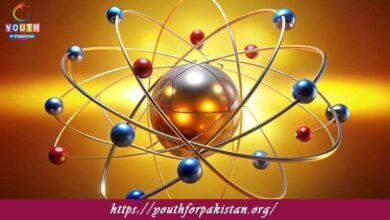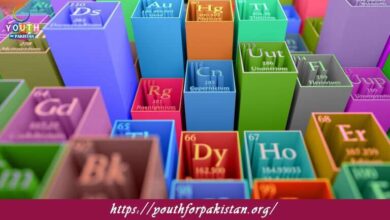9th Class Physics Chapter 5 Quiz with Answers

“9th Class Physics Chapter 5 Quiz: Turning Effects of Force” describes how torque, through forces, causes objects to rotate. This chapter is very important to MDCAT students since the basics of rotational motion and the turning effects of forces are introduced. It is indispensable to grasp the basics of this unit if a student wants to learn advanced level topics in physics. Our multiple choice questions for this chapter will help reinforce these concepts in the minds of students to effectively prepare them for the MDCAT entrance exam.
The chapter first explains the concept of moment of force (torque), the measure of the turning effect of a force applied to an object. Students are shown that it depends both on the magnitude of the force and the distance from the pivot point, the lever arm. This relation is given by τ = F × d, where τ represents torque, F is the force, and d represents the distance. It further elaborates on conditions of equilibrium, including rotational equilibrium, where the sum of all torques acting on an object becomes zero. It also talks about center of mass, couple, and levers, and their applications in real-life tools and machines, like wrenches and seesaws.
MDCAT Quiz: Master the Turning Effects of Force
Our MDCAT Quiz for Chapter 5 is designed to test your understanding of torque, levers, and rotational equilibrium. The quiz includes MDCAT-level problems that help students practice calculating torques and analyzing rotational motion. Regular practice with such quizzes ensures you have a firm grasp of the subject of rotational dynamics and shall be well prepared for questions pertaining to the turning effects of a force in the MDCAT exam.
- Test Name: 9th Class Physics Chapter 5 Quiz
- Type: Quiz Test
- Total Questions: 30
- Total Marks: 30
- Time: 30 minutes
Note: Answer of the questions will change randomly each time you start the test, once you are finished, click the View Results button.
Free Flashcards for Turning Effects of Force
Enhance your revision with free flashcards for Chapter 5. The flashcards cover important concepts such as torque, lever arm, rotational equilibrium, and center of mass, hence making it easy to review and memorize important terms. Flashcards are a great tool for reinforcing your understanding and improving retention of important information, so you’re prepared for the MDCAT exam.

The moment arm is the _____ from the axis of rotation to the point where the force is applied.
Perpendicular distance

A force of 20 N is applied at a distance of 2 meters from the axis of rotation. What is the torque produced?
40 Nm

Which of the following is a method to increase the torque produced by a force?
Increase the distance from the axis of rotation

The moment of a force is maximum when the force is applied _____ to the axis of rotation.
Perpendicular

The moment arm of a force is the _____ from the axis of rotation to the line of action of the force.
Perpendicular distance

A torque of 10 Nm is applied to a door with a moment arm of 0.5 meters. What is the magnitude of the force applied?
20 N

The torque required to produce an angular acceleration of 1 rad/s² in an object with a moment of inertia of 2 kgm² is _____ Nm.
2

The turning effect of a force is maximum when the force is applied at a _____ to the direction of the lever arm.
Right angle

The moment arm is the _____ from the axis of rotation to the point where the force is applied.
Perpendicular distance

A force of 20 N is applied at a distance of 2 meters from the axis of rotation. What is the torque produced?
40 Nm

Which of the following is a method to increase the torque produced by a force?
Increase the distance from the axis of rotation

The moment of a force is maximum when the force is applied _____ to the axis of rotation.
Perpendicular

The moment arm of a force is the _____ from the axis of rotation to the line of action of the force.
Perpendicular distance

A torque of 10 Nm is applied to a door with a moment arm of 0.5 meters. What is the magnitude of the force applied?
20 N
Experience the real exam environment with our expertly designed collection of over 25,000 MCQs MDCAT Mock Tests.





